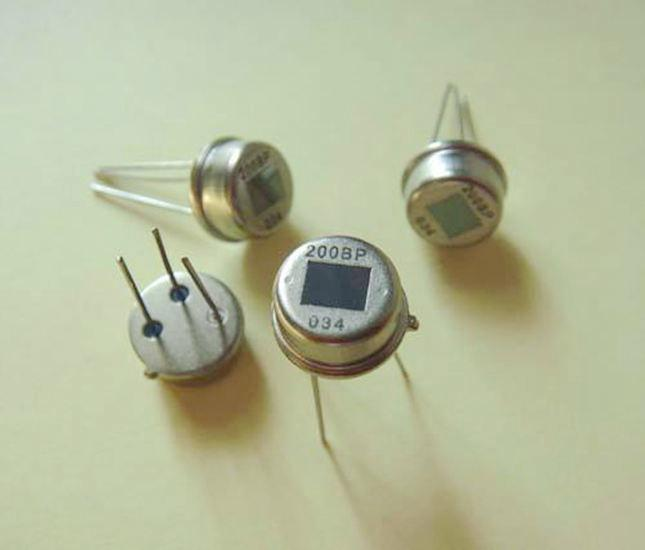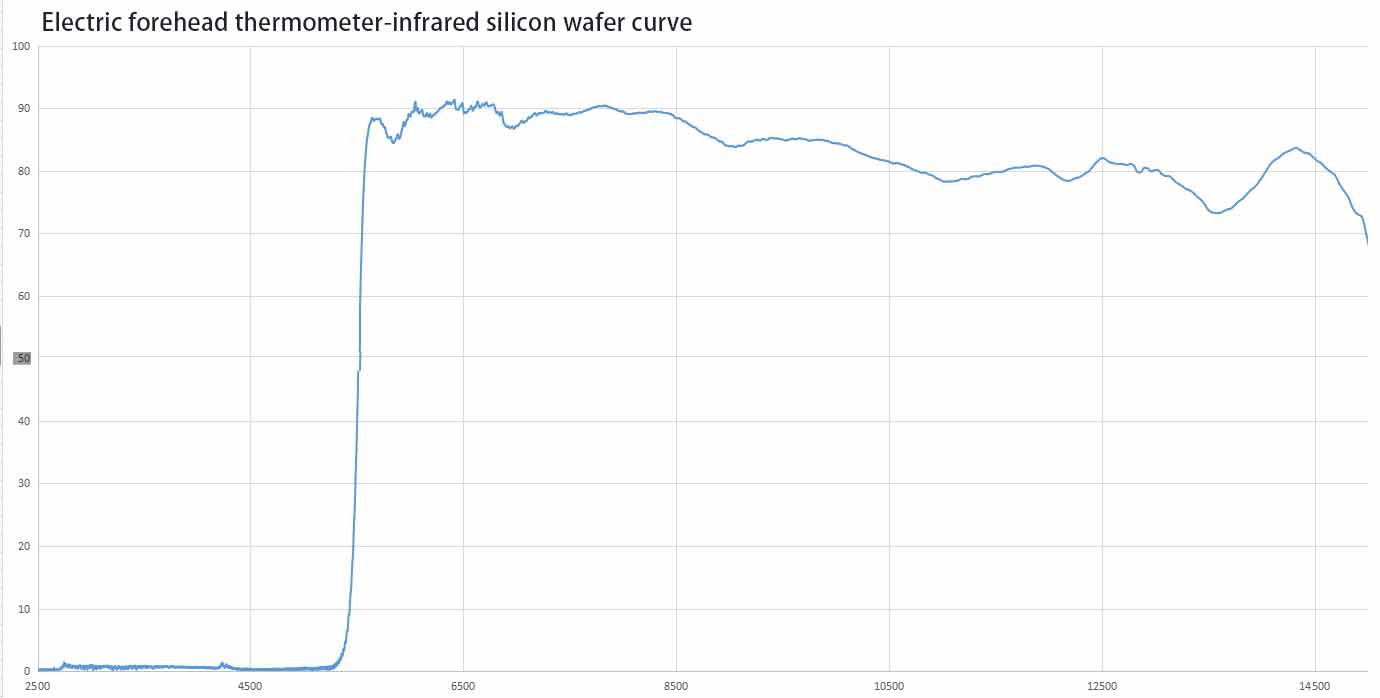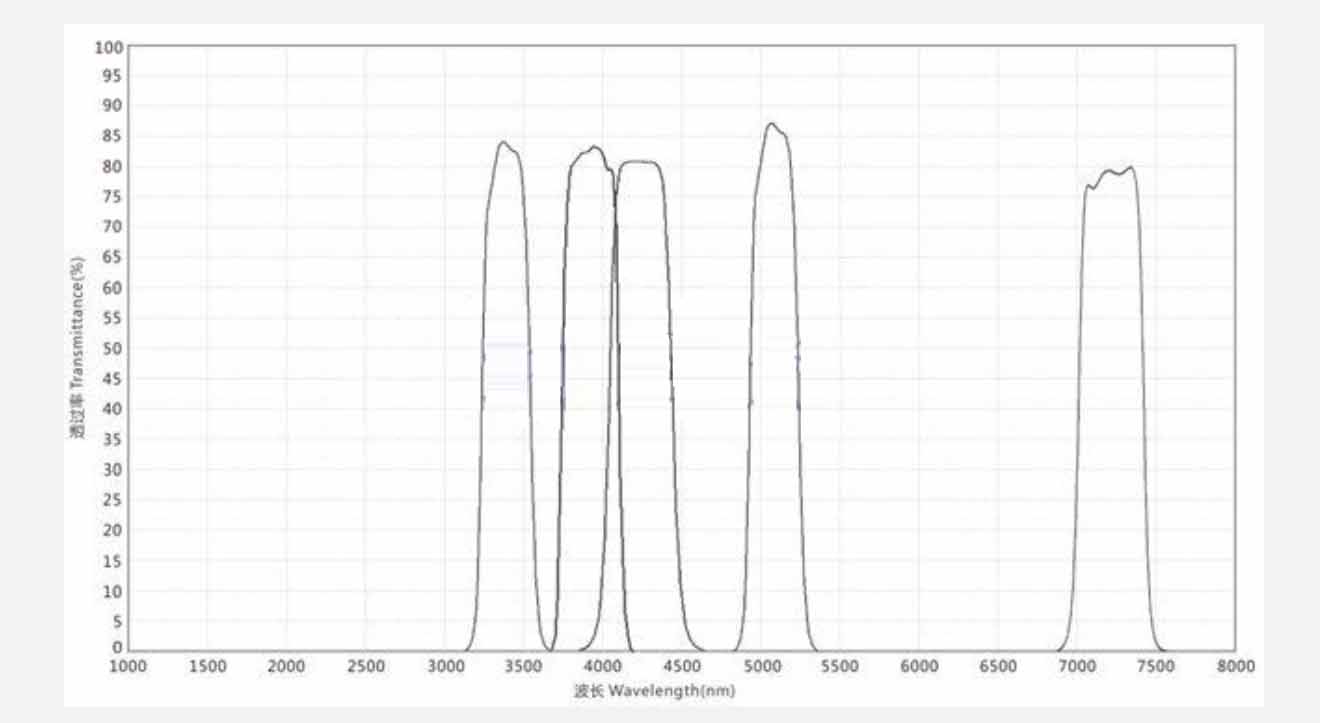Products News
Thermal Infrared Sensor Silicon Filter

Thermal infrared sensor is a new type of high-sensitivity infrared detection element that can detect infrared rays emitted by the human body. The pyroelectric infrared sensor consists of three parts: detection element, filter and field effect tube impedance converter. It can detect the change of infrared energy radiated by the human body in a non-contact form and convert it into a voltage signal output. The output voltage signal is amplified to drive various control circuits, such as power switch control, anti-theft and fire alarm, induction faucet, induction lamp, etc.
The thermal infrared sensor filter is a component of the thermopile sensor chip. It is made of a thin glass sheet coated with multiple layers of filter film, which can effectively filter out infrared rays other than 7.0~14um wavelength. The normal body temperature of the human body is 36~37.5℃, that is, 309~310.5K. The wavelength of the strongest infrared radiation is λm=2989/(309~310.5) =9.67~9.64um, and the central wavelength is 9.65um, which is exactly at the center of the response wavelength of the filter window. Therefore, the filter can effectively allow the infrared radiation radiated by the human body to pass through, and block the infrared radiation in the visible light such as sunlight and lights to the maximum extent to avoid interference. Therefore, the pyroelectric human infrared sensor is only sensitive to the human body and animals with a temperature close to that of the human body.
At present, silicon (Si) single crystal is a widely used filter substrate for the mid- and far-infrared bands. Silicon (Si) single crystal is a chemically inert material with high hardness and insoluble in water. It has good light transmittance in the 1-7µm band, and it also has good light transmittance in the far infrared band of 300-300µm, which is a feature that other infrared materials do not have. Silicon (Si) single crystal is usually used as a substrate for 3-5µm medium-wave infrared optical windows and optical filters. Due to its good thermal conductivity and low density, it is also a common material for making laser reflectors or infrared temperature measurement and infrared optical lenses. Single crystal silicon and germanium windows are the most commonly used infrared windows, used in the optoelectronic field. For example, as an optical conversion element, as an infrared thermal imager window, the best working wavelength of single crystal silicon lenses is 3-5 microns, and the best working wavelength of single crystal germanium is 2-14 microns. It is one of the best substrate materials for long-wave 7-14 micron filters. Basic parameters of thermal infrared sensor filters:
Coating material: silicon (Si)
Size range: 1mm-400mm
Size tolerance: ±0.05mm
Surface quality: National standard level 3, US military standard 60-40, 40-20
Surface accuracy: 1/10 @632.8nm
Coating range: 7um-14um or 3um-5um Other bands please call for customization

Thermal infrared sensor filters can also be used for:
Infrared alarm
Temperature measurement window
Methane CH4 detection
Human body temperature detection
Automobile exhaust detection
Laser instrument application
Biometric application
Military technology application
Carbon monoxide CO detection
Carbon dioxide CO2 detection
Borisun Optics provides a variety of infrared material optical coating lenses, the main infrared materials: infrared fused quartz (JGS3), calcium fluoride (CaF2), magnesium fluoride (MgF2), sapphire (Al2O3), silicon (Si), germanium (Ze), zinc selenide (ZnSe); processing range of 1mm-400mm filter Products such as light sheets, plane mirrors, spherical mirrors, aspherical lenses and reflectors.

RELATED NEWS
- Fully Automatic Chemiluminescence Instrument Filter 2024-10-30
- Ultraviolet UV-C band quartz glass sterilization filter 2024-10-30
- Laser Ranging Filters 2024-10-25
- Laser Welding Machine Filter 2024-10-25
- UV Light Isolation Filters 2024-10-25
CATEGORIES
LATEST NEWS
CONTACT US
Contact: Jessie
Phone: +86 13772020541
E-mail: info@borisun.com; jessie@borisun.com
Whatsapp:+86 13772020541
Add: First floor, dalanyingthermal insulation material factory, Shima Road, Hantai District, Hanzhong City, Shaanxi Province, China 723000
